
Over the weekend Guild Wars 2 players had the chance to get to grips with the new Path of Fire elite specializations in a PvP setting, so I, of course, jumped in with both feet and tried out some of the specializations for myself.
You’ll know already if you’re familiar with my ramblings that PvP isn’t a massive love of mine, but I simply couldn’t resist giving it a go for the sake of the elite specializations. I didn’t get to sample each one for myself because I had some key family events that fell over the weekend too, but I’ve been sure to provide a brief as-I-saw-it summary of the elite specializations I didn’t get to spend time actively playing.
In this edition of Flameseeker Chronicles, I’ll share my thoughts on my preview time spent playing around with the Weaver, Holosmith, Mirage, Scourge, and Spellbreaker and watching the work of the other elite specializations. These are simply rapid-fire impressions — I had to be brief to fit them all into the span of one column — but they should nevertheless be helpful to those who didn’t get hands-on over the weekend.
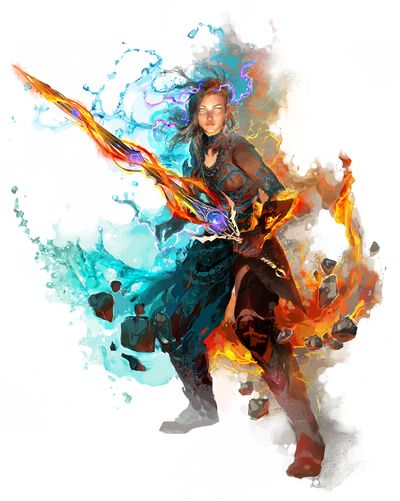 Weaver (Elementalist)
Weaver (Elementalist)
Playtime: Around an hour or two
What it does: A Weaver, as the name implies, possesses the ability to knit together different elements to create new skills that possess the best characteristics of the two blended elements. Where Elementalists once would have changed their elemental attunements at will, with a cooldown on the recently used one, a Weaver’s elemental cooldown is one and the same for all elements to prevent an immediate swap to another blend before the cooldown ends. The Weaver favours close combat with a sword, getting up close and personal with foes to deftly channel combined elements to deadly effect.
Impressions: I relied quite heavily on Unravel during my time with the Weaver, which I wasn’t expecting. The ability to untangle my attunements briefly let me get a little bit of breathing space in familiar territory while I never figured out what I should be doing, but I deeply suspect that seasoned Weavers will not rely on this ability at all. The dual attack skills felt powerful with their clever effects and, although I’ve read many comments to the contrary, I didn’t find them lacklustre or boring at all. I also took a little while to get to grips with such a squishy character taking on the front line role because I never really use my Ele for PvP: I’m not fantastic at PvP by any stretch, but I certainly left behind many corpses while I attempted to get this one right. I feel as though I need much more help in the survivability department, perhaps even some improvements to the barrier base numbers? I get the impression that I will love this elite spec in PvE settings, but a PvP novice like me simply cannot cope with it in those do-or-die moments.
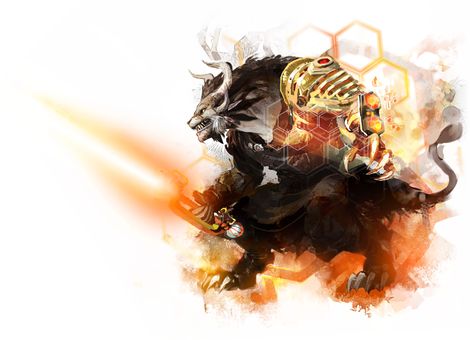 Holosmith (Engineer)
Holosmith (Engineer)
Playtime: About two or three hours
What it does: Holosmiths harness the power of the strong Elonan sun for their quirky experimental inventions, creating light constructs with the newly created and immensely powerful photon forge. Like all good inventions in GW2, the photon forge isn’t perfect: the device is rather prone to overheating when under heavy use and this heat output can cause a great amount of damage the user. While many Holosmiths will want to avoid the burn, some choose to roll with the device’s overheating and use it to cause damage to both nearby enemies and themselves.
Impressions: Oh my goodness, is the photon forge ever fun! Of all the elite specializations, I was most looking forward to testing out the Holosmith, and I’m certainly not disappointed. It looks cool, feels fluid, and it possesses that uniquely Engi quirk as well. I felt as though the Holosmith was a fairly popular choice all round and I saw quite a number during my playtesting, which perhaps backs up my love for this elite spec. Holosmiths are heavy hitters and I definitely felt that this was the most powerful elite specialization I tested: It’s simply too early for me to claim that there are balance issues after only a handful of hours spent trying the specs, but it is something to watch out for. The only disappointment for me was that the sword doesn’t flow as nicely as I expected it to. Lastly, of every elite spec I tried, this one seemed to stand on its own the most. We’ll see if this is just the spec’s initial flashy appeal dazzling me or whether I’ll agree after launch.
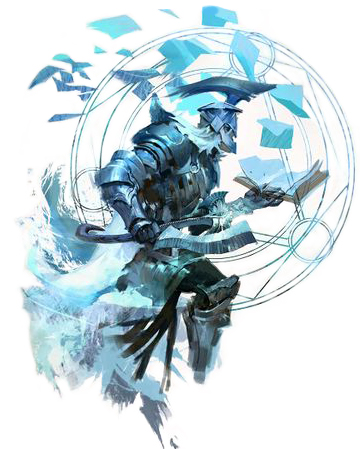 Firebrand (Guardian)
Firebrand (Guardian)
Playtime: None, though my husband played it while joining me
What it does: The Firebrand is a rather more academic Guardian who is a zealous lorekeeper that strives to undo the corruption that Palawa Joko brought to the desert. The Firebrand makes for an excellent field medic and is also skilled in conjuring magical fire. These axe-wielders, who have access to both quickness and supportive healing abilities, use tomes to both deal with enemies and protect friends.
Impressions: Colour me impressed, ArenaNet! I didn’t initially click with the Firebrand on paper, but I have to say that this elite specialization pleasantly surprised me. This spec is all about offensive support: Bringing the bleeds and burns to foes seems to be very entertaining indeed if my husband is anything to go by. He managed to save my bacon a few times while also keeping up that condi damage, so I’d say that the spec does exactly what it says it will. I’ll certainly try out the Firebrand at the next available opportunity after watching him play.
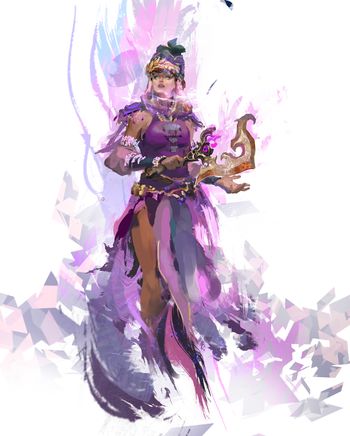 Mirage (Mesmer)
Mirage (Mesmer)
Playtime: Less than an hour
What it does: The mirage cloak allows attacks to pass through this mesmer type without harm while also working offensively. The axe is useful for both close and mid range attacks, and the ambush mechanics allow for some impressive tactical plays that are appreciated by Mesmer fans. There’s not a whole lot more to mention here, which I’ll get into in my impressions below.
Impressions: While I found no huge bugbears while tinkering around with Mirage, nothing about how it works felt all that exciting for me. While I undoubtedly enjoy playing my Mesmer, but this elite spec simply felt like more of the same thing to me and I’m quite upset by that. To me, Mirage is visually more striking and has much more flavour than its base class, but mechanically speaking, I don’t find it much of a stretch from the base build at all. Am I alone in thinking this? I didn’t even put an hour into Mirage because it was such a shallow step from what I already understand about Mesmers. I’m particularly interested in hearing what you think about this one.
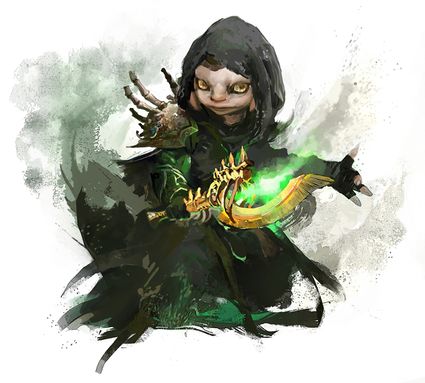 Scourge (Necromancer)
Scourge (Necromancer)
Playtime: Around two to three hours
What it does: The Scourge summon sand shades from areas of power that both shield allies and torment foes. Punishment skills remove boons and convert them into cripple and torment, while protective barriers for allies and the swift application of fear to enemies allows for excellent levels of field control. Scourges trade access to Death Shroud for those Shade skills to create this support build for Necromancers.
Impressions: This elite specialization adds a bit of complexity to the user-friendly Necromancer repertoire that I appreciated, though it was a bit of a task coordinating well in the PvP setting. I really missed my “oh crap, pop Shroud!” fallback, but this I’m sure is more of a Tina thing than an actual issue with the spec. Setting those sand shades effectively takes practice, and I feel as though getting that right in such a fast-paced setting is something that’ll need more than just a couple hours to master. I need to engage my brain far more than I have done before while playing my Necro and my skill use is far more situation-dependent than usual. When I got the balance, however, I did feel a little overpowered. Again, I won’t cry about balance issues after such a short playtest, but it’s something to keep my eye on.
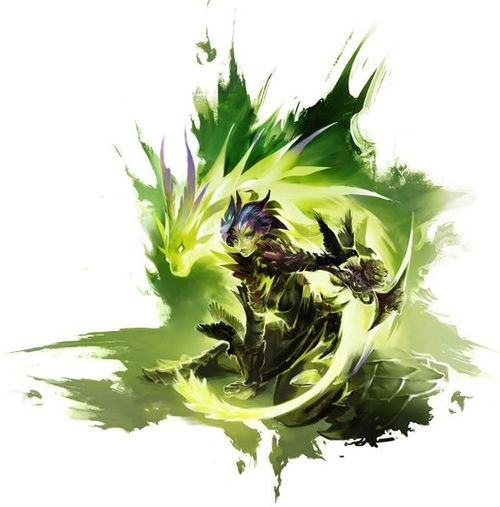 Soulbeast (Ranger)
Soulbeast (Ranger)
Playtime: None, though my husband played it while joining me
What it does: Soulbeasts merge with their pets to assume their archetype and gain specific abilities. The archetypes are far-reaching and offer the full host of flavours you’d expect: A Soulbeast can be a stout defender, ferocious attacker, deadly condi-based battler, supportive healer, or even a versatile utility user. Each pet family offers pets of multiple archetypes, of course, so a Soulbast really is spoiled for choice.
Impressions: The Soulbeast was the highlight of Steven’s weekend, but that’s not to say it was without problems. Survivability was a problem that he experienced throughout his testing and his damage output wasn’t stellar and the dagger main hand was rather lacklustre. Where the Soulbeast shines is most definitely in beast mode though: Steven thought that this was really cleverly employed and he enjoyed the variety offered in this department.
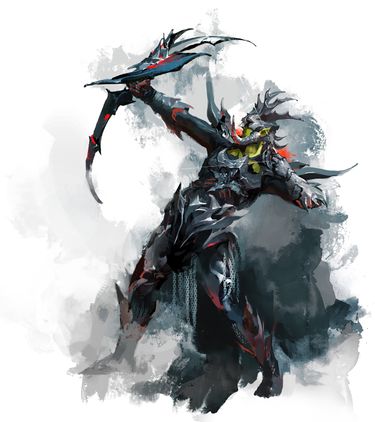 Renegade (Revenant)
Renegade (Revenant)
Playtime: None
What it does: Renegades are made for the offensive support playstyle, pairing a significant damage increase with Kalla’s Fervour and granting might to allies with Heroic Command. Enhancing allies’ damage output while disrupting enemies is the order of the day here.
Impressions: Honestly, I didn’t play the Renegade because not one thing in the description made it sound at all unique or interesting. I know that sounds harsh, but it’s like ArenaNet just combined all the buzzwords from each other new elite spec and just spat them all out for this one in an attempt to make something interesting here. I admit though that my Revenant is probably my most neglected character after my Ranger, so perhaps it’s just me? The warband is apparently costly to use for not much payoff and I see that it polled poorly in the non-scientific but nevertheless still interesting poll that hit the GW2 Reddit.
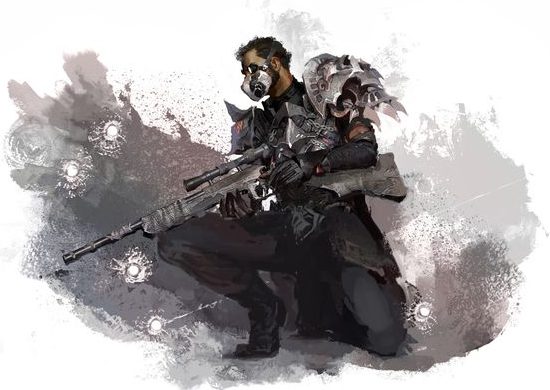 Deadeye (Thief)
Deadeye (Thief)
Playtime: None
What it does: The Deadeye used the rifle to deadly effect, taking out whatever foes happen to fall within that long sightline with ease. Deadeye’s Mark trades the Steal skill’s ability to steal items for the ability to steal aspects of their targets, and the kneel mechanics are a fantastic addition to the Deadeye repertoire.
Impressions: I feel as though I missed out here: That shockingly long range alongside the precision mechanics seem made for smallscale PvP settings to me. I do hope, though, that when I actually do test out Deadeye that it applies equally as well to PvE settings and isn’t just a clunky novelty in the open world. Perhaps this will be fun for taking out some world bosses from a new perspective? The cantrips and Malice generation seem interesting enough to have my attention though.
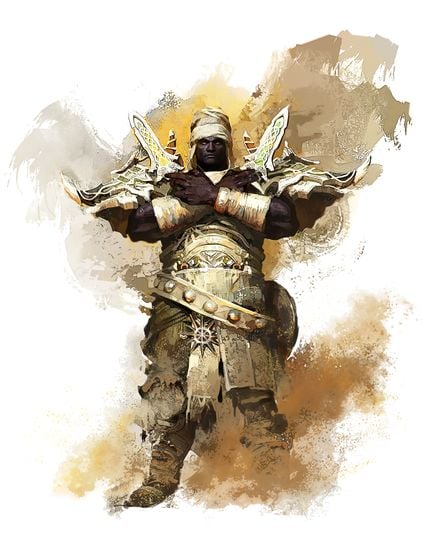 Spellbreaker (Warrior)
Spellbreaker (Warrior)
Playtime: Around an hour
What it does: The Spellbreaker is a throwback to the Sunspears, and their affinity with daggers comes from casting aside the outlawed spear while retaining its deadly tip to use at close range. Spellbreakers are experts at nullifying the advantages of magic use, with Loss Aversion dealing damage to enemies when stripping their boons. Full Counter is a powerful ability that both absorbs attacks and performs an interruptive counterattack to foes in your vicinity.
Impressions: I found the Spellbreaker to be a rather safe bet: Although it didn’t shock me, however, it was definitely more entertaining than the Mirage from my perspective. The reason for this lies mainly in how active I felt when playing and how much I had to actually engage with the skills to be successful. I found landing a full counter to be one of those “woo hoo!” moments you search for in PvP, and the maintenance mechanics found with adrenal health, for example, kept my attention. I don’t know if it’s amazingly different from what we already had, true, but daggers make up for this for me. The daggers, while not amazing when it comes to raw damage output, look like poetry in use and blend in some useful utilities too. I’ll certainly give the Spellbreaker another whirl.
Over to you!
Did you play around with the elite specializations this past weekend? How did your favoured classes shape up? Let me know your thoughts on the elite specs — especially those I didn’t have time to test out for myself — in the comments below.
 Tina Lauro has been playing Guild Wars 2 since it launched and now pens the long-running Flameseeker Chronicles column, which runs every other Wednesday and covers everything from GW2 guides and news to opinion pieces and dev diary breakdowns. If there’s a GW2 topic you’d love to see covered, drop a comment Tina’s way or mail her at tina@massivelyop.com.
Tina Lauro has been playing Guild Wars 2 since it launched and now pens the long-running Flameseeker Chronicles column, which runs every other Wednesday and covers everything from GW2 guides and news to opinion pieces and dev diary breakdowns. If there’s a GW2 topic you’d love to see covered, drop a comment Tina’s way or mail her at tina@massivelyop.com.














